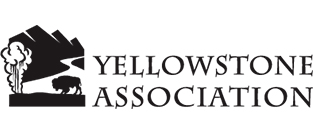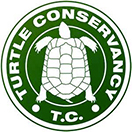A new procedure for fiscal control, which is an intermediary between the document control and the accounting verification, is introduced. The Administration may thus, when taxpayers compelled to keep and present accounting records keep their accounts by means of computerized systems, examine this accounting without going to the spot after the taxpayers have transmitted to them their files of the accounting entries (“fichiers des écritures comptables”, hereinafter “FAE”).
Failure to transmit “FAE” on time and in accordance with the terms and conditions shall result in the imposition of a fine of 5,000 €. This procedure shall apply from December 31th 2016.
I. CURRENT REGIME
1. Right of control – At least since the entry into force of Decree No. 48-1986 of December 9th 1948 on the tax reform of direct taxes, indirect taxes, registration fees and transfer taxes, the tax authorities have one Right of general control, codified today in article L 10 of the Book of
Fiscal Proceedings (“Livre des Procédures Fiscales” hereinafter “LPF”). According to this text, “The tax administration controls the declarations as well as the acts used for the establishment of taxes, duties, taxes and royalties.
It also controls documents filed in order to obtain deductions, refunds or reimbursements, or to pay all or part of a tax by means of a claim on the State. To that end, it may ask to the taxpayers any information, justification or clarification relating to the declarations subscribed or the deeds filed. The provisions contained in the charter of rights and obligations of the audited taxpayer mentioned in the third paragraph of Article L. 47 are opposable to the administration.” This text in particular, among others, authorizes the Administration to implement the “control on documents”, as is regularly qualified in the annual management reports of the Directorate- General for Public Finance (“Direction Générale des Finances Publiques”, hereinafter “DGFiP”).
2. Control on the basis of documents – Applied to firms and individuals, the control on the basis of documents consists of all the office work during which the department reviews the statements using the information and documents contained in the various files it has, and, where appropriate, establishes the justified raises or tax deductions.
It does not require any prior information from the taxpayer who is subject to it and, where an firm is concerned, any travel to its premises is to foresee. If the examination of the file reveals discrepancies between the different elements of the file, the service may ask the taxpayer in writing for additional information, justification or clarification on the basis of Article L 10 of the LPF.
If the discrepancies in the file appear to him to be sufficiently precise, the service may send the taxpayer a proposal for rectifications. In the absence of discrepancies, he will close the control without informing the taxpayer who will thus ignore the attention paid to his file by the DGFiP.
3. Accounting verification – Where applicable, if the control on documents has failed to regularize, from the office, the taxpayer’s situation, the audit of accounts, where the taxpayer is compelled to hold it, constitutes the logical follow-up of the control on documents.
Unlike the latter, the accounting verification is an on-the-spot verification by the officials of the administration of the accounting and accounting documents of the taxpayers who are required to keep them.
Where accounting is carried out using computerized systems, a specific procedure is provided for (LPF, Article L. 47A, I), in which taxpayers are required to remit to the auditor, at the beginning of the control, the file of the files of the accounting entries.
II. NEW REGIME
4. Article 14 of the Amending Finance Law for 2016 (“Loi de Finances rectificative pour 2016”) introduces a new procedure of fiscal control, which is an intermediate between the control on documents and the accounting audit.
While many observers were awaiting the gradual introduction of an annual FAE deposit obligation in the same way as the income tax returns, the legislator opted for a solution more pertinent avoiding to clog the computer servers of the DGFiP with files which would not be used in their entirety.
3 There is an annual average of about 45,000 accounting audits : if we relate it to the number of companies in France, which is about 3,400,000, we obtain an “accounting audit attendance rate” of DGFiP of 1.3%.
This rate has been stable over the past few years and is unlikely to change, except to increase the number of auditors, because the audit of accounts is greedy in human and material resources as soon as it takes place on the spot and it is no secret that the Administration has long sought to control and reduce its costs. By introducing a new tax audit procedure midway between document control and accounting audit, the legislator accompanies the DGFiP in this search for cost reduction while granting it the possibility of maintaining or even increasing its presence in fiscal control through the automation of a part of its approach and its analytical work.
Close to the control on part, the new procedure constitutes a new mode of remote control. This new method of control will not, a priori, be applied to companies that present high risks or whose size and complexity of subjects would require an on-the-spot verification.
From this point of view, the new accounting review system should be compared with Decree No 2016-1356 of October 11th 2016, which provides that:
– the approved management centers (“centres de gestion agréés”) (CGI, Section II, Article 371 E),
– the approved associations of liberal professions (“associations agréées des professions libérales”) (CGI, ann. II, Article 371 Q),
– the joint management certified bodies (“organismes mixte de gestion agréés”) (CGI, Ann. II, Article 371 Z sexies),
– professional accountants (“professionnels de l’expertise comptable”) (CGI, ann. II, Article 371 bis F),
Control the ability of their members or clients to comply, where appropriate, with the obligation to create and make available to the DGFiP the FAE at the beginning of each accounting audit and therefore a fortiori in the context of an accounting examination.
However, the DGFiP may also decide, for example, to apply the accounting examination to companies falling under the competence of the French National and International Audit
Department (“Direction des vérifications nationales et internationales” or “DVNI”) or Fiscal Control Department ‘”Direction de contrôle fiscal” or “DIRCOFI”) whose accounting verification would not have been considered as a priority for more than 3 years. This would enable it to confirm its analysis or, on the contrary, to convert the examination into a full accounting verification.
Note: The French Constitutional Council (“Conseil constitutionnel”) has received a complaint alleging that, by permitting the taking of documents and questioning of the taxpayer’s declarations without ensuring respect for the oral and contradictory debate, the new system undermined respect of the rights of the defense.
However, the Council considered that “the impugned provisions allow the administration to obtain a copy of the records of a taxpayer’s accounting entries in order to conduct an accounting examination. On the other hand, they do not endow it with a power of forced execution to obtain its reissue. Consequently, those provisions do not deprive the taxpayer of the guarantees provided for in the LPF in the event of the exercise by the administration of its 4 right of supervision, do not infringe the rights of the defense or any other Constitutional requirement” (Constitutional Council, Dec. 29th 2016, No. 2016-743 DC, Amending Budget Law for 2016, § 13 to 17).
5. Entry into force
In the absence of precision in the text, the new procedure enters into force on 31 December 2016 (the day after the publication of the law in the Official Journal).
A. New accounting procedure 1° Relevant taxpayers
6. The law now provides that, under the conditions laid down in the LPF, officials of the Administration can, when contributors required to keep and present accounting documents keep their accounts by means of computerized systems, examine this accounting without going on the spot (LPF, article L. 13 G new).
2° Conduct of the procedure
7. Preliminary sending of a notice of accounting examination – The accounting examination shall not be initiated unless the taxpayer has been informed of it by a notice of examination of the accounts (LPF, Article L. 47 (1) as amended).
This notice must contain the same information as a notice of audit of accounts (years subject to verification, the right to be assisted by a counsel of his choice, the possibility of consulting or remitting the charter of rights and obligations of the taxpayer checked).
8. Presentation of the FAE – Within fifteen days of receipt of the accounting examination notice, the taxpayer must send the Administration a copy of the FAE, in a dematerialized form meeting the standards set out in Article A. 47 A-1 of the LPF (LPF, Article L. 47 AA new, 1).
This timeframe is very short and virtually untenable for many companies that would not have anticipated the production of FAE for the fiscal years covered by an accounting review notice.
This is why we strongly recommend that taxpayers involved in FAE production generate them regularly after each year-end and check:
that they will be exploitable under normal conditions in the event of control (technical validation),
that their content complies with the accounting standards laid down by the French Commercial Code and that it corresponds to that of the tax declarations (corporate tax, VAT, etc.) subscribed to elsewhere (accountable and tax validation).
9. Operations by the Administration – As soon as the FAE has been communicated to it, the Administration may carry out sorting, classifications and all calculations on the files of the accounting entries. On the basis of their examination, it will be able to question the
contributor and ask him for information, justifications or clarification to characterize any anomalies detected.
As part of its responses to these questions, the taxpayer may be required to provide the Administration with additional information in the form of files.
5
The latter can then apply computer processing to them without applying Article L. 47 A, II of the LPF (LPF, art, L. 47 AA new, 3).
10. Follow-up of the examination – At the latest six months after the receipt of the copy of the FAE, the Administration shall:
send to the taxpayer a proposal for rectification;
inform him of the absence of correction (LPF, Article L. 47 AA new, 4)
11. An obligation to provide information on the results of the examination is also provided for in Article L. 49 of the LPF.
Furthermore, at the latest when the correction proposal is sent, the Administration must inform the taxpayer of the nature and results of the computer processing operations which give rise to improvements (LPF, Article L. 47 AA New, 5). This obligation is confined to the assumption that the Administration requested additional information in the form of files.
12. As in the case of verification of accounts, the Administration must indicate in the proposed rectification the amount of the duties, taxes and penalties resulting from these corrections (Article L. 48, paragraph 1, as amended).
13. Before the assessment or before informing the contributor of the absence of rectification, the Administration will have to destroy the copies of the files transmitted (LPF, article L. 47 AA new).
14. If the accounting examination concerns a small company, the Administration must reply to the comments of the taxpayer within sixty days, otherwise the failure to notify a reply within that period will be equivalent to acceptance of those comments ( LPF, S. 57A, amended I).
15. In general, when the conditions are fulfilled, the adversarial procedure will apply and the possibility of a dialogue between the Administration and the company will be preserved. The exchanges between the taxpayer and the Administration will be carried out in writing and / or
orally during the procedure. Furthermore, if the supervisor maintains all or part of the rectifications envisaged, the taxpayer will be able to rely on his superior for further clarification.
Similarly, at the end of this procedure, the departmental or national commission of direct taxes and turnover taxes will be competent in the event of the implementation of the inter partes hearing procedure on questions of fact of its competence.
16. The taxpayer may prefer to request, within 30 days of receipt of the proposal for rectification of errors, inaccuracies, omissions or inadequacies in the declarations taken within the deadlines be corrected for the taxes on which Carries out the accounting
examination, subject to the payment of a default interest equal to 70% of the normal late payment interest (LPF, amended Article L. 62). Note: 1) The request for regularization is also possible in the event of an audit of accounting, but the taxpayer must make the request before any proposal of rectification. In the context of the accounting examination, the 30-day deadline after the proposal for rectification is justified by the fact that, unlike on-the-spot controls, it does not allows the taxpayer to make its observations “in real time” to the auditor.
2) Regularization, which is not possible in cases of exclusive bona fide offense, shall be subject to the filing of a supplementary declaration within thirty days of its request and to the payment of the interest and late payment due at the date of filing of the declaration, or at the deadline for payment on the assessment notice in the case of assessment by way of roll.
3° Articulation with other control procedures 17. Articulation with the personal tax situation examination (“examen de situation fiscale personnelle”) – As in the course of an accounting audit, the Administration may, during theaccounting review, examine transactions in financial accounts used for both private and professional purposes. It can also request clarification from the taxpayer, or justifications for such operations without this examination and applications constitute the start of a personal tax situation examination (LPF, Article L. 47 B, paragraph 2, as amended).
The Administration may take into account, in each of these procedures, the findings resulting from the examination of the accounts or the replies to requests for clarification or justification and made under the other procedure in accordance with the rules applicable to the latter (LPF, Article L. 47 B, paragraph 3).
18. Prohibition of cumulation with an accounting control for the same period – The law now provides that when the accounting verification or the accounting examination for a given period in respect of a tax or a group of taxes is completed, the Administration won’t be able to carry out a verification or examination of the same entries in respect of the same taxes and for the same period (LPF, article L. 51 amended).
The list of exceptions to the prohibition of non-cumulation is adapted to take account of the introduction of the new examination procedure.
In particular, exception will be made to non-cumulation:
– where the audit or examination of accounts has been limited to specific transactions
– in the case of verification or examination of the accounts of parent companies of integrated tax groups.
Important: Thus, as long as it is not completed, there is nothing to prevent the evolution of an accounting examination to an audit of accounts, under the conditions of ordinary law.
B. Sanctions in the absence of provision of FAE or non-compliant FAE
19. Failure to transmit FAE on time and in accordance with the procedures provided for shall result in the imposition of a fine of 5,000 € (CGI, Article 1729 D, II new). In addition, the accounting examination may be canceled (LPF, article L. 47 AA new, 2), which authorizes the Administration to undertake an on-the-spot accounting audit covering the same period, under the conditions of common law.
fichier à telecharger:
 170125 Introduction of a distance review procedure
170125 Introduction of a distance review procedure




